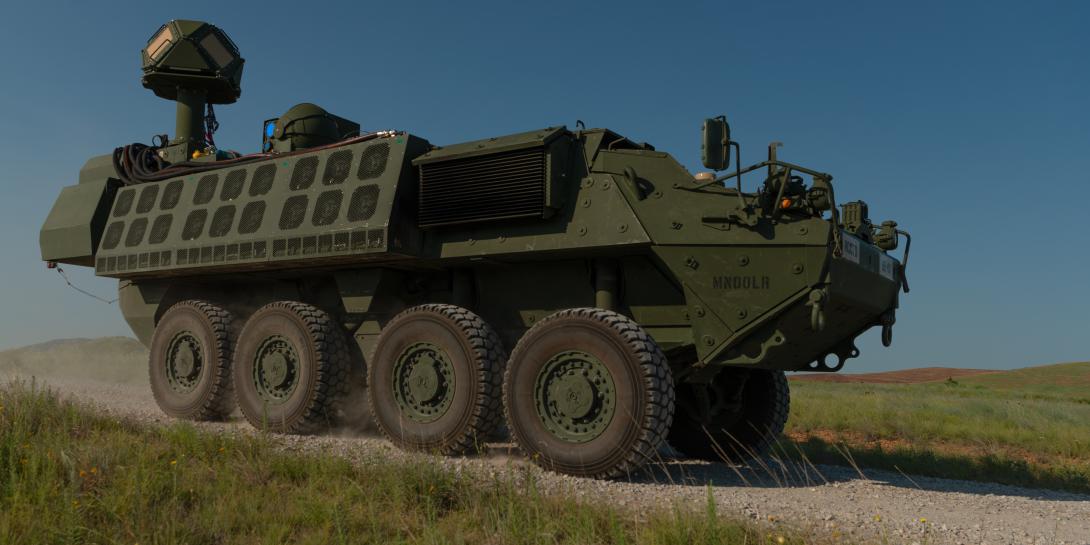Army Aims to Deploy Prototype Tactical Lasers
Soldiers on the battlefield may be using ray guns to defend against airborne threats sooner rather than later. The U.S. Army Rapid Capabilities and Critical Technologies Office (RCCTO) is fielding four prototype units of Stryker-mounted laser systems in the Directed Energy Maneuver Short-Range Air Defense (DE M-SHORAD) effort.
Each of the four systems employs 50-kilowatt-class lasers powered internally by the Stryker using gasoline-fueled generators. The lasers are designed to protect divisions and brigade combat teams against unmanned aircraft systems, rotary- and fixed-wing threats, rocket artillery and mortar rounds, Army officials say.
The systems were tested recently at Fort Sill, Oklahoma, in a combat shoot-off. Marcia Holmes, deputy director of Hypersonics, Directed Energy, Space and Rapid Acquisition at the RCCTO, emphasized at a media roundtable that these four prototypes drew from existing technologies in the research community for rapid deployment, which is slated for 2022.
“We’re delivering a brand-new capability,” said Col. G. Scott McLeod, USA, program manager for DE M-SHORAD. “It’s not a modification or an upgrade, but it’s something unlike any other system the Army has in the field today.”
The DE M-SHORAD system employs its own organic radar for target acquisition and tracking. But, Col. McLeod noted, the system also can access the air picture from the Terminal High Altitude Area Defense command and control (THAAD C2) for offboard cueing.
Craig Robin, deputy director of the RCCTO DE Project Office, explained that DE M-SHORAD is one of three directed energy prototyping efforts for area missile defense within the Army. The other two are associated with the indirect fires protection capability mission set: a high-energy laser and a high-power microwave. These are paired in a layered defensive approach to protect fixed and semi-fixed sites against threats similar to those for the DE M-SHORAD. The high-energy laser would target long-range threats, while the high-power microwave would counter close-in swarm threats.
The battery, power and cooling are all self-contained in the DE M-SHORAD system. The fiber-combined laser is a spectrally combined system. Robin said that it has “more than enough run time” from a single shot of the laser to be able to address multiple threats before needing to recharge. The system has the ability to continuously charge and cool itself, he added.
Two competitive teams vied to build the Stryker laser system under other transactional authority (OTA) contracts. The contract was established with a series of gates that enabled the Army to measure prototype progress, Robin noted. The combined team took about two years to design, integrate and have the system ready to perform in an operational environment, the colonel said.
Production will continue with the team that built the first four systems so that Army leaders can decide on approaches for a competitive full-rate production program in the future, Robin added. Col. McLeod offered that the Army is not expecting any significant redesign of the system going forward.





Comments